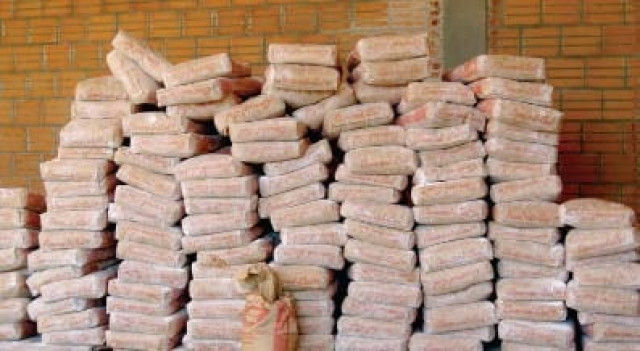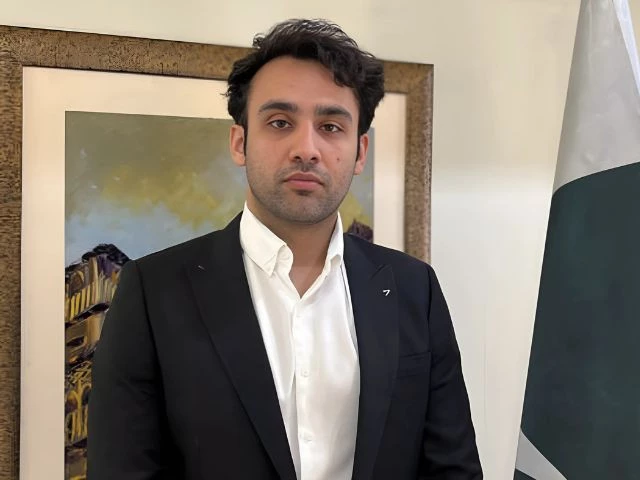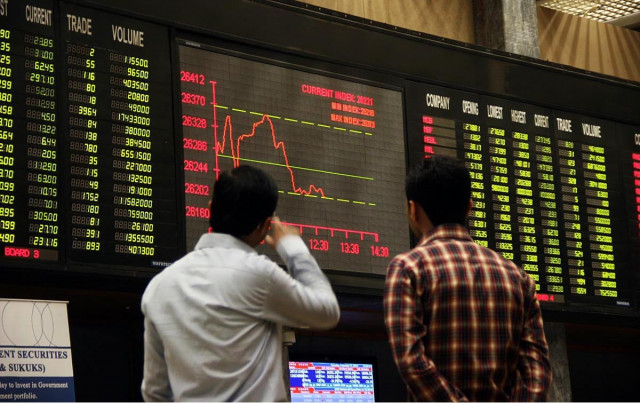Business
Despite floods, sales of cement rise 12.5% | The Express Tribune

LAHORE:
Local cement sales of Pakistan’s industry reached 3.097 million tons in August 2025, higher by 10.33% compared to sales of 2.807 million tons in the corresponding month of last year, according to data released by the All Pakistan Cement Manufacturers Association (APCMA).
Exports rose 22.13% as volumes stood at 749,723 tons in August 2025 against 613,857 tons in August 2024. In terms of growth figures, July was far better as the industry registered an increase of 18.61% year-on-year (YoY) in domestic sales and a jump of 84% in exports. Total cement dispatches during August 2025 were calculated at 3.846 million tons against 3.421 million tons in the same month of last fiscal year, exhibiting an increase of 12.45%.
North-based mills supplied 2.795 million tons, up 8.10% from 2.585 million tons in August last year. Similarly, southern mills sold 1.05 million tons, which was 25.93% higher than dispatches of 0.835 million tons in the previous year. Mills in the northern zones dispatched 2.586 million tons to domestic markets, showing an increase of 8.64% compared to sales of 2.380 million tons last year. South-based mills provided 510,758 tons to local markets, higher by 19.81% over dispatches of 426,289 tons during August 2024.
Exports from the northern mills marginally increased by 1.84% as volumes rose from 204,901 tons in August 2024 to 208,669 tons in August 2025. Exports from the south recorded a healthy growth of 32.30% to 541,054 tons compared to 408,956 tons last year.
During the first two months (July-August) of the current fiscal year, total cement dispatches were 7.847 million tons, which was 20.88% higher than last fiscal year.
A spokesman for the APCMA mentioned that Pakistan was passing through tough times due to excessive rains and floods, which have extensively impacted the citizens. He urged the government to reduce taxes on cement to bring down the cost of rehabilitation in the rain and flood-stricken areas.
Business
IndiGo Faces Massive Flight Cancellations: Can Travel Insurance Save Stranded Flyers?

Last Updated:
IndiGo faces massive flight cancellations despite DGCA rollback, affecting thousands. Experts like advise on travel insurance claims and proper documentation.
ndiGo Disruption Intensifies: What Travel Insurance Covers During Flight Chaos
There seems to be no end to the mayhem of IndiGo’s operational meltdown as hundreds of flights have been cancelled on Saturday. The chaos has continued despite the Directorate General of Civil Aviation (DGCA) rolling back the Flight Duty Time Limitations orders, which were the lead cause to disrupt the capability of carriers to maintain regular operation.
Thousands of passengers, from students to senior citizens to professionals, have been affected in the past few days during the flight cancellations, disrupting their plans and schedules. Along with that, they have to face monetary losses too.
Travel insurance is one such option that travelers can use while facing this kind of situation. Not many of people in India are aware of how a travel insurance works and whether all plans cover flight cancellation costs.
Meet Kapadia, Head of Travel Insurance at Policybazaar.com said that travel Insurance offers fixed pay outs if the traveller is stranded for a specified number of hours (6–12 hours).
“They also reimburse the cost if the flight is cancelled and traveller has to book a new flight, or arrange hotel stay, cover meals, essentials, and other emergency purchase,” Kapadia added.
Customers, however, should know that a very low-priced/ basic product of travel insurance may not pay for non-medical losses from an airline operational cancellation unless that benefit is purchased, according to Chetan Vasudeva, Senior Vice President – Business Development at Elephant.in, Alliance Insurance Brokers.
“No – basic plans may not fully cover losses from airline operational problems unless the policy explicitly includes or has an option for trip cancellation / carrier cancellation, trip interruption, missed-connection or trip-delay benefits,” Vasudeva added.
He further told that many standard travel policies include only basic medical, baggage and emergency assistance by default. “If you want protection specifically against airline operational issues, check for carrier cancellation/trip cancellation/missed-connection or buy a cancel-for-any-reason add-on cover.”
Beyond the financial safety net , the insurer also provides 24×7 assistance and emergency support to help passengers manage disruption with less stress in unfamiliar locations.
What Should Customers Need To Do To Get Claims?
The first 24 hours after a flight cancellation are crucial for building a strong claim file.
The policyholder should immediately need to obtain written proof from the airline such as an email, SMS, or a formal flight disruption certificate, that clearly state the due cause and timing of the cancellation, explained Vasudeva. “At the same time, this is when policyholder should inform their insurance provider’s helpline immediately after the disruption; quick intimation is often listed as a mandatory requirement in most policies,” he added.
During this period, every incidental expense such as food, hotel stays, transport, or rebooking, should be supported with itemized receipts and payment proofs. If the airline offers alternative arrangements like meal vouchers or free accommodation, passengers need to preserve those records as well, because insurers cross-verify what has already been compensated.
Careful documentation in the first 24 hours substantially reduces the chances of queries, delays, or rejection during the processing of claims, Vasudeva stated.
December 06, 2025, 13:56 IST
Read More
Business
After 25 Bps Cut, India At 5.25%: How Policy Rates Compare Across BRICS, US And Other Economies

Last Updated:
At 5.25%, India’s policy rate is higher than the US, UK and Eurozone but far below Brazil and Russia, which still run double-digit rates to fight inflation pressures.
RBI cuts repo rate by 25 bps to 5.25 per cent
India’s Central bank has shifted gears to support the economic momentum and ease lending with a rate cut of 25 basis points in the latest Monetary Policy Committee (MPC) meeting between December 3 to 5. The latest lending benchmark – repo rate – stood at 5.25 per cent after Friday’s 25 bps cut from 5.50 per cent.
The Reserve Bank of India (RBI) governor, Sanjay Malhotra, in his speech on Friday, termed the current economic situation as ‘rare goldilocks period’, stating that inflation is at a benign 2.2 per cent and growth at 8.0 per cent in H1:2025-26.
The standing deposit facility (SDF) rate under the liquidity adjustment facility (LAF) now adjusted to 5.00 per cent and the marginal standing facility (MSF) rate and the Bank Rate to 5.50 per cent. The MPC also decided to continue with the neutral stance.
The repo rate is the interest rate at which banks borrow money from the RBI. When banks face a shortage of cash, they borrow from the RBI by pledging government bonds. The interest the RBI charges on this borrowing is known as the repo rate. If the RBI raises the repo rate, borrowing becomes costlier for banks. If it lowers the rate, banks can access funds more cheaply.
The policy rate is a critical monetary tool utilised by the banks to control money flow into the economy. The Central banks of different countries seek to strike a balance to keep the economic growth momentum and stop inflation from getting out of control.
Comparison of Different Policy Rates As Of Now In Major Economies:
| Country | Interest Rate (Policy Rate) |
| United States | 4.00 % |
| United Kingdom | 4.00 % |
| Eurozone (ECB) | 2.15 % |
| India (RBI) | 5.25 % |
| Japan (BoJ) | 0.50 % |
| Australia (RBA) | 3.60 % |
| Canada (BoC) | 2.25 % |
| China (PBoC) | 3.00 % |
| Brazil (BCB) | 15.00 % |
| Russia (CBR) | 16.50 % |
India’s policy rate stood in align with the developed economies such as USA and UK, while a way too below in comparison to BRICS countries. For instance, Brazil and Russia’s policy rates are in the double digit – 15% and 16.50% respectively, due to run away inflation.
December 06, 2025, 09:34 IST
Read More
Business
Petrol, Diesel Fresh Prices Announced: Check Rates In Your City On December 6

Last Updated:
On December 6, 2025, OMCs updated petrol and diesel prices across cities like New Delhi, Mumbai, and Chennai, reflecting global crude oil trends, taxes, and currency rates.

Petrol, Diesel Prices On December 6
Petrol and Diesel Prices on December 6, 2025: OMCs update petrol and diesel prices daily at 6 AM, aligning them with fluctuations in global crude oil prices and currency exchange rates. This daily revision promotes transparency and ensures consumers have access to the most up-to-date and accurate fuel prices.
Petrol Diesel Price Today In India
Check city-wise petrol and diesel prices on December 6:
| City | Petrol (₹/L) | Diesel (₹/L) |
|---|---|---|
| New Delhi | 94.72 | 87.62 |
| Mumbai | 104.21 | 92.15 |
| Kolkata | 103.94 | 90.76 |
| Chennai | 100.75 | 92.34 |
| Ahmedabad | 94.49 | 90.17 |
| Bengaluru | 102.92 | 89.02 |
| Hyderabad | 107.46 | 95.70 |
| Jaipur | 104.72 | 90.21 |
| Lucknow | 94.69 | 87.80 |
| Pune | 104.04 | 90.57 |
| Chandigarh | 94.30 | 82.45 |
| Indore | 106.48 | 91.88 |
| Patna | 105.58 | 93.80 |
| Surat | 95.00 | 89.00 |
| Nashik | 95.50 | 89.50 |
Key Factors Behind Petrol and Diesel Rates
Petrol and diesel prices in India have remained unchanged since May 2022, following tax reductions by the central and several state governments.
Oil Marketing Companies (OMCs) update fuel prices daily at 6 am, adjusting for fluctuations in global crude oil markets. While these rates are technically market-linked, they are also influenced by regulatory measures such as excise duties, base pricing frameworks, and informal price caps.
Key Factors Influencing Fuel Prices in India
-
Crude Oil Prices: Global crude oil prices are a primary driver of fuel prices, as crude is the main input in petrol and diesel production.
-
Exchange Rate: Since India relies heavily on crude oil imports, the value of the Indian rupee against the US dollar significantly affects fuel costs. A weaker rupee typically translates to higher prices.
-
Taxes: Central and state-level taxes constitute a major portion of retail fuel prices. Tax rates vary across states, leading to regional price differences.
-
Refining Costs: The cost of processing crude oil into usable fuel impacts retail prices. These costs can fluctuate depending on crude quality and refinery efficiency.
-
Demand-Supply Dynamics: Market demand also influences fuel pricing. Higher demand can push prices up as supply adjusts to consumption trends.
How to Check Petrol and Diesel Prices via SMS
You can easily check the latest petrol and diesel prices in your city through SMS. For Indian Oil customers, text the city code followed by “RSP” to 9224992249. BPCL customers can send “RSP” to 9223112222, and HPCL customers can text “HP Price” to 9222201122 to receive the current fuel prices.
December 06, 2025, 07:47 IST
Read More
-

 Tech6 days ago
Tech6 days agoGet Your Steps In From Your Home Office With This Walking Pad—On Sale This Week
-

 Sports5 days ago
Sports5 days agoIndia Triumphs Over South Africa in First ODI Thanks to Kohli’s Heroics – SUCH TV
-

 Entertainment5 days ago
Entertainment5 days agoSadie Sink talks about the future of Max in ‘Stranger Things’
-

 Fashion5 days ago
Fashion5 days agoResults are in: US Black Friday store visits down, e-visits up, apparel shines
-

 Politics5 days ago
Politics5 days agoElon Musk reveals partner’s half-Indian roots, son’s middle name ‘Sekhar’
-

 Tech5 days ago
Tech5 days agoPrague’s City Center Sparkles, Buzzes, and Burns at the Signal Festival
-

 Sports5 days ago
Sports5 days agoBroncos secure thrilling OT victory over Commanders behind clutch performances
-

 Entertainment5 days ago
Entertainment5 days agoNatalia Dyer explains Nancy Wheeler’s key blunder in Stranger Things 5











